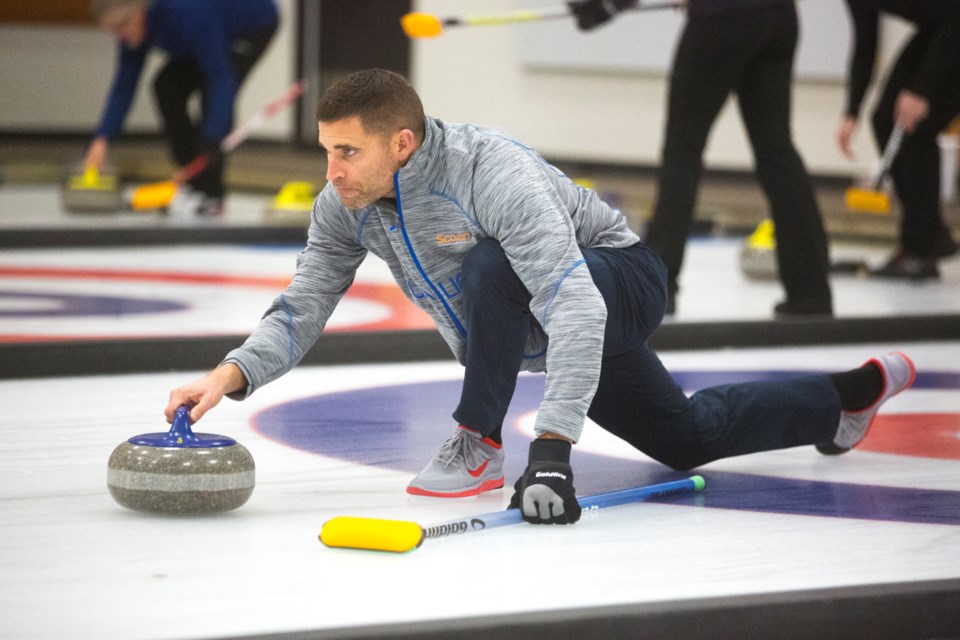
Without getting too technical, how do you play?
Let’s start with the men’s and women’s team events. There are four players on each team, who rotate jobs. But for each throw, one player delivers the rock — the aforementioned granite stone, which weighs between 38 and 42 pounds — two teammates sweep and the fourth person sets the target. The target is at the other end of the sheet. Known as the house, it’s a series of concentric circles that forms a sort of bull’s-eye.
So, how do you score?
Each match takes place over 10 ends, which are kind of like innings in baseball. A total of 16 rocks — eight per team — are thrown during each end, and the teams alternate shots. One of the quirks of curling is that only one team can score in each end, and that point goes to the team that puts a rock closest to the button once all 16 of them have been thrown. If that team has two rocks closest to the button, they get two points — and so on. If a team takes three or four points in a single end, that’s a huge score and often amounts to an insurmountable lead.
Also, it might be worth familiarizing yourself with the term “hammer.” The team with the hammer gets to throw the last rock, which is a huge tactical advantage. The hammer for the first end is awarded to the team that puts two rocks closest to the button in a pre-game shootout. (Officials measure the combined distance.) As the match wears on, the hammer goes to the team that did not score in the previous end.Simple, right? Thought so. In any case, there’s a ton of strategy involved, especially in the early portions of ends as teams set up their stones ahead of a flurry of late action in hopes of scoring as many points as possible.
Why do curlers turn the handle just before they release the rock?
Because of friction with the ice, a rock will naturally curl as it travels down the sheet. So to control that curl, players give the handle a little turn — either clockwise or counterclockwise. They must release the handle before they reach a horizontal stripe called the hog line.
What’s the deal with sweeping?
Good question. Scholars have actually written research papers on the subject of sweeping, which is fraught with controversy — seriously! The physics are complicated. For the sake of simplicity, let’s just say that sweeping slightly increases the temperature of the ice while creating micro-scratches on the surface. The result is that sweepers are able to manipulate the path that the rock takes as it travels down the sheet. We’re talking inches rather than yards. But in a sport that hinges on precision, good sweeping can separate gold from silver.
How is mixed doubles different from the team events?
There are fewer players (two versus four), fewer ends (eight versus 10) and fewer total rocks in play (12 versus 16). The result is a fast-paced, high-drama competition that will make its Olympic debut here in Pyeongchang.One team to watch: Matt and Becca Hamilton, siblings from Wisconsin who will compete for the United States. Their Olympic experience could turn into a marathon. In addition to mixed doubles, the Hamiltons are also competing in the men’s and women’s events.
Comments (0)